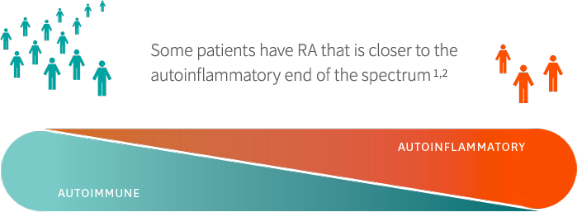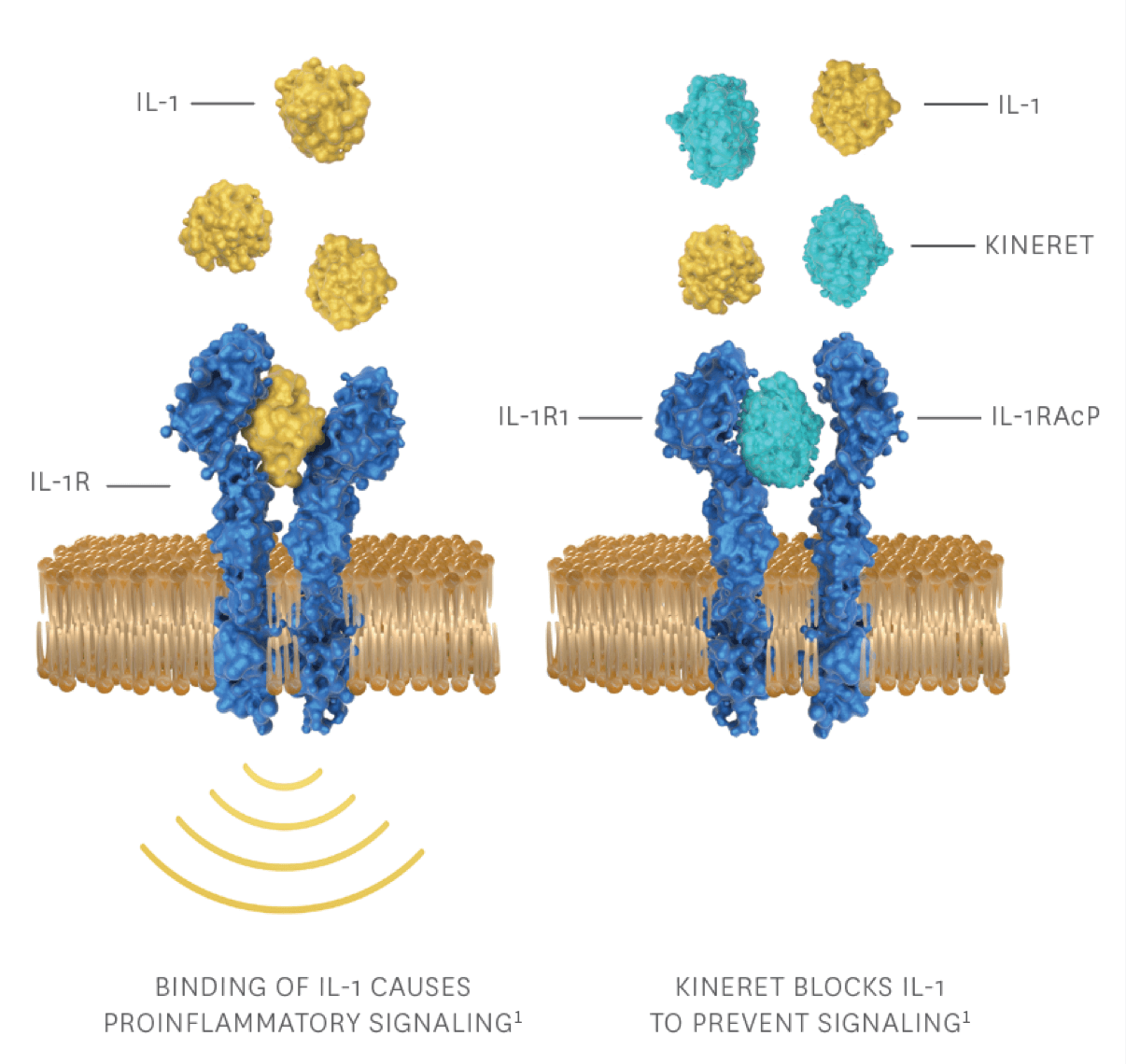Difficult-to-treat RA
KINERET for difficult-to-treat RA
Why some RA patients don’t respond to conventional therapies
If your patient has tried and failed multiple RA treatments, their disease may be driven by autoinflammation.1,2
RA exists along a spectrum
Though RA is primarily defined as an autoimmune disease, the distinction between autoimmune and autoinflammatory disease isn’t clear. Because there are various interactions and similarities between the innate and adaptive immune systems, they may be viewed as 2 ends of the same spectrum.1,2 Some patients have RA that is closer to the autoinflammatory end of that spectrum.1

Where does your patient’s RA fall?
Understanding which end of the spectrum your patient’s disease leans toward can be challenging, but there are key clues to watch for. Along with treatment history, you may want to consider any elevated acute-phase reactants and extraarticular signs of inflammation, including:
- Fever3,4
- Rash1
- Fatigue3,4
- Muscle weakness4
- Keratoconjunctivitis sicca (dry eye)4
Steroid resistance can be a telling clue
Since RA is typically considered an autoimmune disease, therapies targeting the adaptive immune system (like steroids) are often prescribed. But autoinflammatory disease isn’t usually well controlled by these types of therapies.3 There may be several factors at play, including:

The overexpression of
cytokines that suppress
steroid sensitivity5

Dysregulation of
steroid receptors5

The signaling of
inflammatory pathways5

Genetic
mutations5
KINERET is a very specific treatment for a very specific RA patient
RA that is primarily autoinflammatory may be mediated by interleukin-1 (IL-1), cytokines produced by cells in the innate immune system.6 KINERET is an IL-1 receptor antagonist, blocking an underlying cause of inflammation in difficult-to-treat RA.7
Learn how KINERET works



